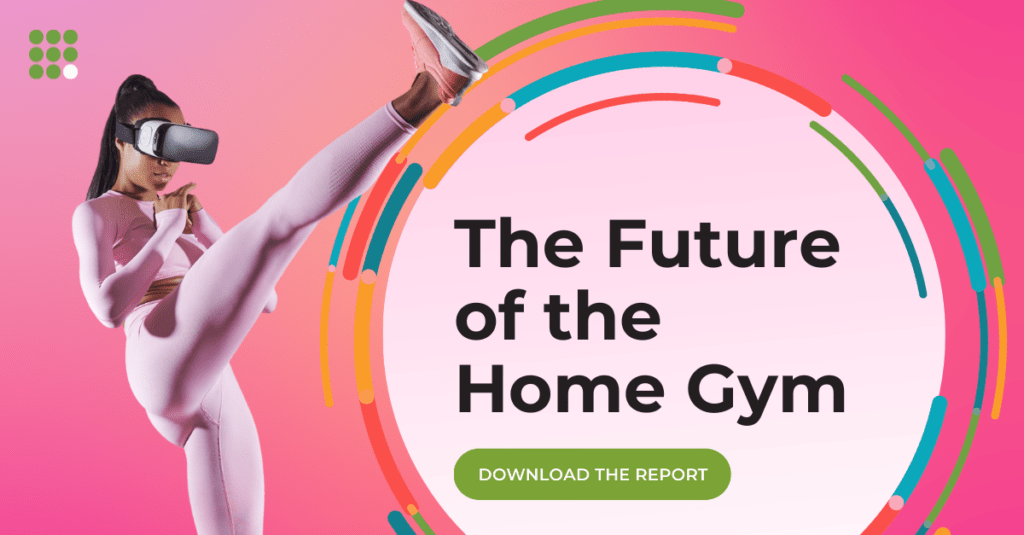Market research surveys are essential tools businesses can use to gain valuable insights into consumer behavior, preferences, and opinions. This information can help brands make informed decisions that boost their bottom line. In this article, we’ll explore the benefits of market research surveys, the different types of surveys available, and six key steps to conducting effective market research surveys.
What are Market Research Surveys?
Market research surveys are designed to gather information about a company’s target audience. They can provide a wealth of data on demographics, desires, beliefs, and purchasing behavior. Companies use market research surveys to collect data about brand awareness, evaluate demand for new products, and assess customer satisfaction.
The information collected through market research surveys is an example of primary research. This means that companies are collecting information that hasn’t been previously collected, which is in contrast to secondary research, where pre-existing data is used. Quantitative data collected through surveys allows executives to make quick, fact-based business decisions.
Why Use Market Research Surveys?
Market research surveys give businesses a window into the consumer psyche, enabling them to develop products and services that resonate with their target market. Surveys can help companies to research and analyze their target market, measure brand awareness, and gain insight into current or future products.
Research and Analyze a Target Market
The primary goal of a market research survey is to gain insight into the people who are buying or may buy a company’s products or services. This insight may range from customer satisfaction to a consumer’s reaction to advertisements, also known as ad testing. Market research surveys often collect demographic data to enable deeper analysis among sub-groups of the population or the target market. For example, a questionnaire may request information regarding gender, location, and education level.
Measure Brand Awareness
When a company is immersed in its business, it can be challenging to objectively assess what the target market thinks of its products and services. (Or, if its products and services are even on their radar.) That’s where a brand awareness survey comes into play. A brand awareness survey seeks to evaluate consumers’ awareness of a brand, the frequency of usage, and their perception of it compared to competitors. This information can be used to determine if a company is breaking through the noise or if more energy needs to be invested in marketing efforts.
Gain Insight into Current or Future Products
The best way to determine if a product meets customer needs is to ask customers directly through an online product feedback survey. This questionnaire may ask questions like, ‘What changes would improve the product?’ and ‘What do you like most about products from other brands?’
A similar type of survey can also be conducted before releasing a product. These surveys help companies work out kinks or determine which features are most important to consumers before officially launching the product.
Types of Market Research Surveys
Market research surveys can give brands the information needed to make key decisions, from adjusting or determining pricing to providing a new service. However, to collect meaningful data, market researchers must select the correct type of survey based on the target audience and the overarching research goal.
Online Surveys
Online surveys, or panel surveys, are developed using survey platforms and distributed to panelists via email. This survey method is relatively quick and affordable, with global accessibility. Even better, online surveys are often automated, saving companies time and money.
However, online surveys are vulnerable to survey fraud and response bias. Respondents may straight-line or speed through questions, and some scammers make a living by intentionally hacking surveys to collect economic incentives.
Pros
- Relatively low cost
- Global accessibility
- Real-time access to results
- Convenient for both panelists and researchers
- Quick execution
- Automated
Cons
- Vulnerable to survey fraud
- Vulnerable to response bias
- Sampling is limited to respondents with internet access
In-person Interviews
In-person interviews have been a staple of market research for a long time. Participants must travel to a physical location where a market researcher asks a series of questions that are answered verbally. A market researcher is present to answer and clarify any questions that the interviewee may have. In comparison, panelists completing online questionnaires may abandon the survey altogether if confused.
However, in-person interviews are significantly more expensive and time-consuming. Participants may also feel less inclined to respond honestly to potentially sensitive questions.
Pros
- Market researcher is available to offer clarification
- Moderators can take note of non-verbal cues
- Panelists can experience products in real life (in the case of product testing)
Cons
- Relatively higher cost
- More time-consuming
- Panelists are geographically limited
Telephone Surveys
During a telephone survey, market researchers ask panelists a series of questions over the phone. The primary benefit of a telephone survey is that the moderator can offer further instruction and clarification if a respondent is confused by a particular question.
However, most people screen their calls and hesitate to answer a phone number they don’t recognize. Additionally, questions that can be asked in an online survey to keep the respondent engaged typically do not translate well to phone interviews.
Pros
- Wide geographic access
- Relatively cost-effective
- Market researcher available to answer questions
Cons
- Difficult to connect with panelists
- Questions must be simple and brief
- Panelists may be unwilling to share sensitive information
Mail Surveys
With a mail survey, questionnaires are sent directly to panelists’ homes. The panelists then complete the surveys and mail them back to the company. This method allows market researchers to target segments of the population based on geography and reaches people who are not part of online panels or are an underrepresented group. Panelists may also be more willing to offer honest answers in writing instead of online, in-person, or via phone.
However, it can be challenging to motivate panelists to return the surveys via mail, and there is no way to ensure that the sample that responds is representative. The process is also significantly slower than other methods, particularly online surveying.
Pros
- Lower administrative costs relative to in-person/telephone surveys
- Geographical segmentation is possible
- Panelists may offer more honest responses
Cons
- Time-consuming
- High non-response error
- Difficult and time-consuming to process data
How to Conduct Market Research Surveys
To gain insight into what makes a target market tick, market research surveys must be conducted properly; otherwise, companies risk wasting their time and money. A faulty survey could also sour a customer’s relationship with the company.
Follow the six steps below to conduct market research surveys that yield high-quality data:
Step 1: Set Clear Research Objectives
Start the process by establishing a clear research goal. What do you hope to discover by conducting this research? Be specific; the more granular, the better. Examples of research objectives include:
To better understand the customer journey, we aim to discover what triggers our five user segments to purchase Product X. To improve our spring marketing campaign; we want to assess brand awareness among consumers ages 18 to 25.
Knowing what you hope to discover will help you design an effective market research survey.
Step 2: Identify Your Audience
Once you have a clear understanding of your research objective, you need to determine who your target audience is. Your target audience will be the group of people that your survey will be aimed at.
To identify your audience, you need to understand the key demographics of your customers. This information will help you create survey questions relevant to their interests, habits, and preferences. For example, if you are conducting market research for a new line of athletic shoes, your target audience would likely be people interested in fitness and exercise.
Demographics to consider when identifying your target audience include age, gender, income, education level, occupation, and location. Consider other relevant factors to your business or industry, such as interests, hobbies, and purchasing habits.
It’s also important to consider the size of your target audience. If you are researching a small niche market, you may need to adjust your survey questions accordingly. For example, you may need to focus on more specific questions relevant to that particular group of people.
By understanding your target audience, you can create survey questions relevant to their needs and interests. This will help you gather more accurate and useful data that can be used to make informed business decisions.
Step 3: Create Survey Timelines
The next step in conducting a market research survey is to create a timeline. Your timeline should outline when the survey will be sent to participants, when you hope to collect all the information, and whether the survey will be sent multiple times.
When creating your timeline, it’s important to consider the best time to send the survey to participants. This will help ensure that you get the highest possible response rate. For example, if you target working professionals, you may want to send the survey during the workweek, when they are most likely available.
It’s also important to consider the length of your survey. A too-long survey may discourage participants from completing it, while a too-short survey may not provide enough valid data. Generally, a survey should take at most 15 minutes to complete.
In addition to creating a timeline, setting a response deadline is also a good idea. This will help ensure you receive all the data you need to make informed business decisions.
Step 4: Determine Margins of Error
When conducting a market research survey, it’s critical to understand the margin of error. This is the amount of difference between the sample and the population that can be expected due to chance. In other words, the amount of uncertainty exists in your data.
To determine the margin of error, you need to know the size of your sample and the size of your population. The larger your sample size, the smaller your margin of error will be. However, there is a point of diminishing returns, where the additional cost of increasing your sample size may not be worth the decrease in the margin of error.
It’s important to consider the margin of error when interpreting your survey results. A larger margin of error means that your data may be less reliable, while a smaller margin of error means that your data is more reliable.
Step 5: Send the Survey
Once you have created your survey, identified your target audience, and set a timeline, it’s time to send the survey. There are several ways to distribute your survey, including email, social media, and online survey platforms.
When sending your survey, it’s essential to personalize your message and explain why you are conducting the research. This will help increase response rates and ensure your data is accurate. It’s also a good idea to set a total sample size for the number of responses you want to collect. This will help you avoid collecting too much or too little data and ensure that your survey results are statistically significant.
The sample size will depend on the margin of error you determined in Step 4, as well as the size of your target audience.
Step 6: Analyze the Data
After collecting responses, it’s time to analyze the data. This is where the insights you need to make informed business decisions will be found. You can use data analysis tools to answer your research questions and analyze the data by different subgroups, such as age, gender, or location, to gain deeper insights.
The information gleaned through this process will help you make data-driven decisions that serve your customers and give your company a competitive edge. You can use this information to develop products and services that better meet the needs of your target market, adjust pricing accordingly, and refine your marketing efforts.
Market research surveys are powerful tools to help brands better understand their customers and make informed business decisions. By conducting market research surveys, you can gain insight into the people that matter most: your target audience. You can use this information to collect demographic data and data related to consumer desires, beliefs, and purchasing behavior.
Different types of market research surveys exist, including online surveys, in-person interviews, telephone surveys, and mail surveys. Each has advantages and disadvantages, and your chosen survey type will depend on your research objectives, target audience, and budget.
To conduct an effective market research survey, follow the six steps outlined in this article. Set clear research objectives, identify your audience, create survey timelines, determine margins of error, send the survey, and analyze the data.
By conducting market research surveys, you can gain a competitive edge by better understanding your customers and making informed business decisions based on facts and data rather than gut feelings.
At Kadence International, we provide expert market research solutions to help businesses gain valuable insights into their target market. Our team of experienced researchers is dedicated to delivering high-quality data that can inform your business decisions and drive success.
If you want to understand your customers better and make informed business decisions, we’re here to help. Contact us today to learn more about our market research services and how we can help you achieve your business goals. With Kadence International, you can be confident in making data-driven decisions that lead to success.
Get regular insights
Keep up to date with the latest insights from our research as well as all our company news in our free monthly newsletter.





 Senior Marketing Executive
Senior Marketing Executive Sales & Marketing
Sales & Marketing General Manager PR -Internal Communications & Government Affairs
General Manager PR -Internal Communications & Government Affairs Vital Strategies
Vital Strategies
 Customer Intelligence Director
Customer Intelligence Director